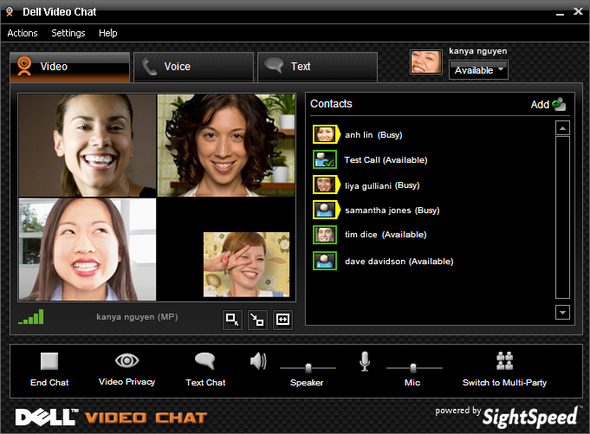It seems that society may indeed by approaching a wave of secondary orality with the age of computers and their vast capabilities. A few devices come to mind most immediately.
The latest iPhone with Siri (voice activated software which allows users to give the phone commands rather than inputting them manually). While phones have been using voice commands for nearly a decade, Siri is the first that can actually respond more or less appropriately to a user's demands and can make some limited decisions based on input. The ramifications of this technology are immense. This phone can allow people, such as quadriplegics and others with handicaps, to be able to communicate through the phone. Another tool, originally an iPhone software innovation, is the ability to use the phone as a camera to speak with another individual. This also can allow for communication possibilities which are either more oral in nature, i.e. facial expressions, etc. or can enable those who are mute to sign through the phone to other people in order to communicate. The cellular telephone (or really the telephone as a whole) in general is a sign that humans are moving in the direction of a oral culture, while not displacing many chirographic forms of communication, it certainly does replace much of the letter writing that used to be the prominent communication form.
 |
| The iPhone 4 |
|
|
While working with a group of disabled gentlemen, I encountered a device which astounded me. One of the young men I worked with was a severely handicapped 17 year old who was quadriplegic as well as non-verbal. We had weekly appointments with a group of specialists at the University of Wisconsin who gifted him a Dynavox. This machine allowed my friend to, in essence, speak using only his eye movements. He could control the speech of the computer with just a slight flick of the pupil. A laser would detect this movement and draft sentences to verbalize through a speaker. The entire apparatus attached to his wheelchair and could be turned on and off at will and used when needed for his communication needs.
 |
| Dynavox mounted to wheelchair | | |
|
 |
| Dynavox user interface |
|
The Dynavox came with an initial setup but the interface could be easily customized with common words, sayings, sentences, or phrases to enable the user ease of access to whatever they wished to communicate. For my client, sayings like "What's up?" or "Would you like to come over to my house?" were input because he used them the most. Later models of the Dynavox were enabled with technology to enable phone hook-up, television remote controls, and access to the internet. While all the technology was based in typography, the device translated everything into oral forms of communication. Even without, or in the event of a loss of knowledge of the alphabet and word forming processes, the Dynavox can use pictures to convey many ideas without being concretely based in letters and words.
Another community which has sprung up in the computer age is the "chatroom" community. Initially, these were based on typing in a live forum where people would discuss, argue, and joke about many subjects. However, later on there evolved chatrooms where computer video cameras became common. This allows users to interact without having to do so much as a single keystroke. One thing I have noticed about most of these video chatrooms is the amount of agonistically toned conversations. Everything is fair game in these rooms. There are even places where people do mostly singing on their cameras. Flyting, song creation, and popular song rendition and imitation are extremely common among these music chatrooms. The mobile computer manufacturers have kept pace with these ever-evolving online communities, creating built-in webcams for their laptops and other mobile devices. I believe every Apple laptops comes with a built-in camera.
 |
| One type of chatroom |
 |
| Dell created their own video chat software |
|
These video chatrooms have become so prevalent that Facebook and computer manufacturer Dell have incorporated them into their main interfaces. Skype is another variety of video communication software which allows users to connect from anywhere to be able to talk with loved ones or distanced friends. It is becoming a very common tool with elderly folks who cannot use their telephones any longer because the software is simple and can remain on all the time.





No comments:
Post a Comment